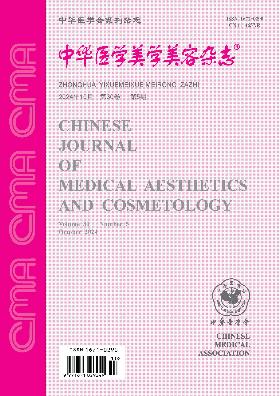Phenotype-based gene analyzer applied to the genetics of microtia
引用次数: 0
Abstract
Objective Microtia is a relatively common birth defect, and its etiology is still unclear. In this paper, Phenolyzer, a kind of phenotype-based gene analyzer, was used to prioritize candidate genes involved in microtia. Methods The search term " Microtia" was entered in the Phenolyzer interface. Through the steps of disease matching, gene query, gene scoring, seed gene expansion, the genetic information results of microtia were finally generated. This article traced 10 candidate genes in detail. Results There were 13485 genes associated with microtia or related syndromes, of which 130 were seed genes. Each gene had a corresponding score, and the higher the score, the greater the correlation with the microtia. Among them, the top 10 genes included HOXA2, CHD7, CDT1, CDC6, ORC1, ORC4, ORC6, SMAD4, GLI3 and MED12. Conclusions Phenolyzer provides a detailed summary of candidate genes for microtia, providing accurate research directions for screening high-throughput sequencing results and subsequent studies. Key words: Microtia; Gene; Prioritization; Phenolyzer基于表型的基因分析仪在微小病遗传中的应用
目的小耳畸形是一种比较常见的出生缺陷,其病因尚不清楚。在本文中,Phenolyzer,一种基于表型的基因分析仪,被用于优先选择涉及微小症的候选基因。方法在Phenolyzer界面中输入检索词“Microtia”。通过疾病匹配、基因查询、基因评分、种子基因扩增等步骤,最终生成了微小病的遗传信息结果。本文详细追踪了10个候选基因。结果共有13485个基因与微小症或相关综合征相关,其中130个为种子基因。每个基因都有相应的分数,分数越高,与微疲劳的相关性就越大。其中,排名前10的基因包括HOXA2、CHD7、CDT1、CDC6、ORC1、ORC4、ORC6、SMAD4、GLI3和MED12。结论Phenolyzer对微小症的候选基因进行了详细的总结,为筛选高通量测序结果和后续研究提供了准确的研究方向。关键词:Microtia;基因;优先次序;苯酚分析仪
本文章由计算机程序翻译,如有差异,请以英文原文为准。
求助全文
约1分钟内获得全文
求助全文
来源期刊
自引率
0.00%
发文量
4641
期刊介绍:
"Chinese Journal of Medical Aesthetics and Cosmetology" is a high-end academic journal focusing on the basic theoretical research and clinical application of medical aesthetics and cosmetology. In March 2002, it was included in the statistical source journals of Chinese scientific and technological papers of the Ministry of Science and Technology, and has been included in the full-text retrieval system of "China Journal Network", "Chinese Academic Journals (CD-ROM Edition)" and "China Academic Journals Comprehensive Evaluation Database". Publishes research and applications in cosmetic surgery, cosmetic dermatology, cosmetic dentistry, cosmetic internal medicine, physical cosmetology, drug cosmetology, traditional Chinese medicine cosmetology and beauty care. Columns include: clinical treatises, experimental research, medical aesthetics, experience summaries, case reports, technological innovations, reviews, lectures, etc.

 求助内容:
求助内容: 应助结果提醒方式:
应助结果提醒方式:


